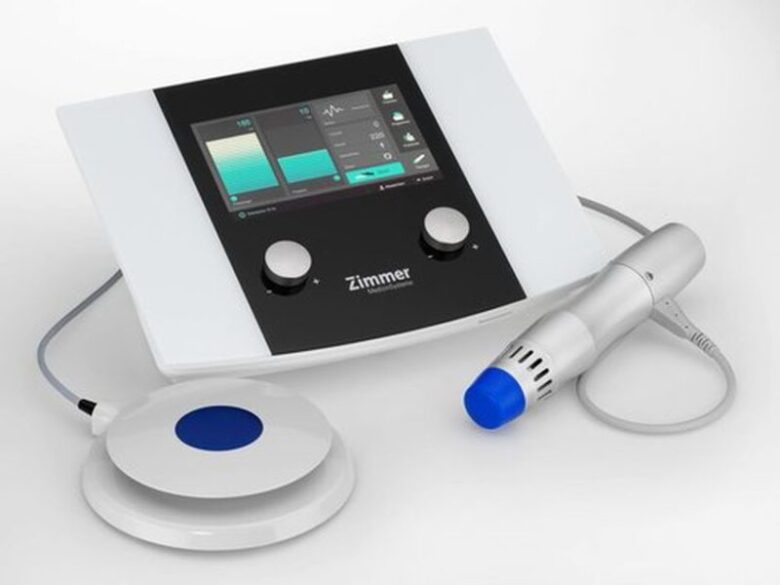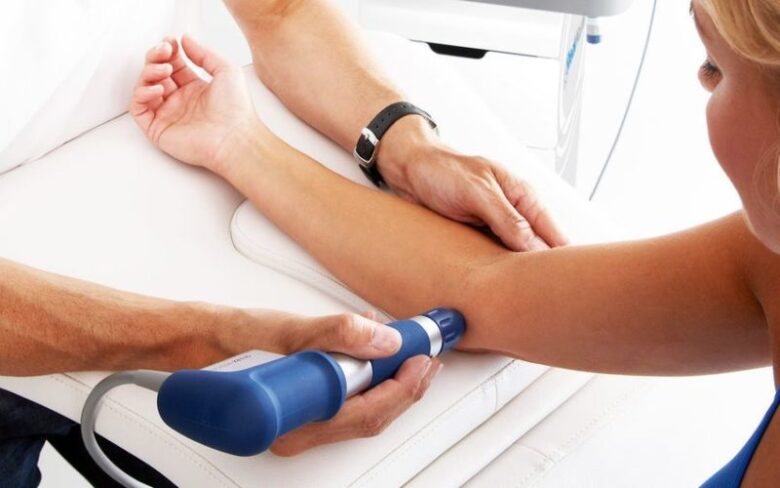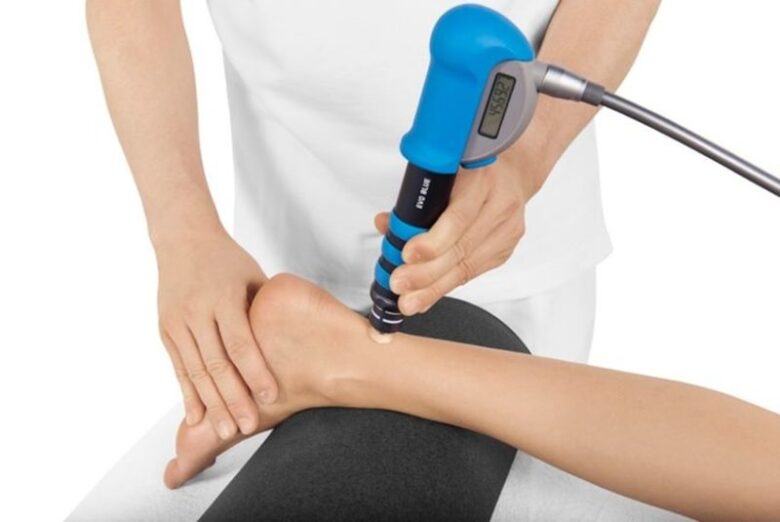Extracorporeal shock wave therapy (ESWT) was first used in 1982 to treat urological conditions. At the time, it was the first noninvasive effective method. It was primarily used to treat kidney stones, but after noticing the increase of bone density in the nearby bones, the research for uses in orthopedic purposes was started.
Nowadays, ESTW is mostly used in lithotripsy (to treat stones in gallbladder and liver, besides kidneys), and in treatment of tennis elbow, Achilles tendinitis, plantar fasciitis, shoulder rotation cuff pain, and greater trochanteric pain syndrome. In the following text, we are going to discuss some of these conditions and treatments.

Tennis and golfer elbow is a common yet extremely painful condition that affects tendons that attach to the outside, that is, the inside of the elbow respectively. This can occur to people who overuse their arms and wrists through the same frequent motions, which means, it can affect anyone, not just tennis players and golfers.
If you want to learn more about the symptoms and cause as well as risk factors, visit the DTAP clinic’s website. People who suffer from this indisposition should avoid the physical activity for some time and do mild exercises to strengthen the muscles. If necessary, the doctor will prescribe them a painkiller such as paracetamol and they will undergo extracorporeal shock wave therapy.

Another ailment that can be treated with ESWT is shoulder pain. Since we use our shoulders for many everyday activities such as reaching for something or lifting objects, it is very prone to dislocation, in fact, more than any other joint in our entire body. Not only can sport activities cause this problem, but also it can be brought on by lifting heavy objects, falls and accidents, and in some people, it can be provoked by wearing and tearing due to aging.
Additional causes can be frozen shoulder (when the movement becomes restricted due to the growth of bands of tissue between joint surfaces and the deficiency of synovial fluid that lubricates the joint), rotator cuff injury (when tendons get strained due to recurrent movement or any kind of trauma), shoulder dislocation, bursitis, and so on.

Furthermore, we are going to mention plantar fasciitis i.e. the pain in the bottom of the heel when one takes the first steps in the morning. Even though this pain is severe, it usually weakens after a few minutes. It usually affects people between the ages of 40 to 60 who are obese or have just started a new physical activity. Flat feet or high foot arch can also cause plantar fasciitis. It can be treated by gentle exercises, wearing a splint at night or arch supporters as well as ESWT that utilizes sound waves to stimulate the healing process.

Lastly, we are going to mention knee pain that affects almost everyone at some point in life. This type of pain can occur as a result of injuries (ligament, meniscal, tendon injury, etc.) or fractures that can happen due to a number of physical activities or accidents. If the pain is developing slowly, over time, it can be a sign of arthritis.
In order to discover the cause, the doctor will perform X-ray, CT or MIR scan and decide on the course of the treatment accordingly. Depending on the type of injury, it can include physiotherapy, medication, ESWT, intra-articular injection, and if necessary, surgery.
All in all, these are only some ailments that can be cured by using extracorporeal shock wave therapy, and there are more such as weak erection, erectile dysfunction, chronic prostatitis syndrome, and so on.


